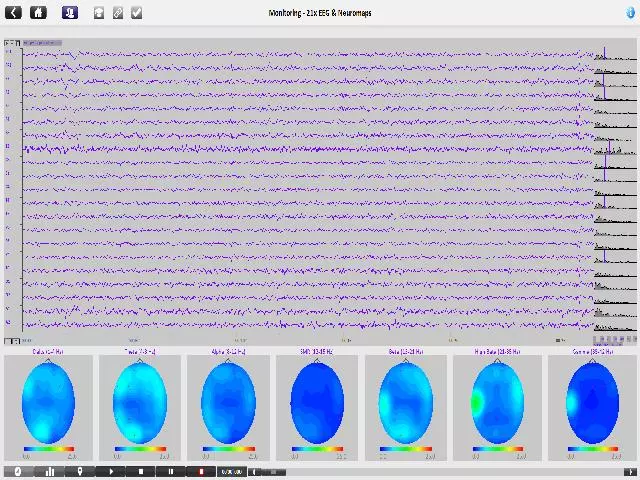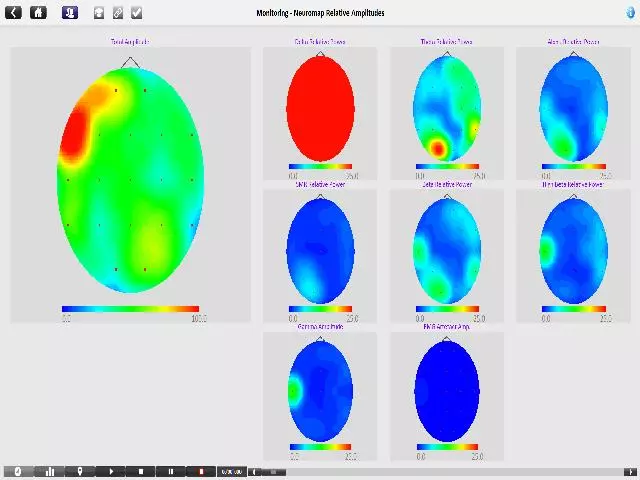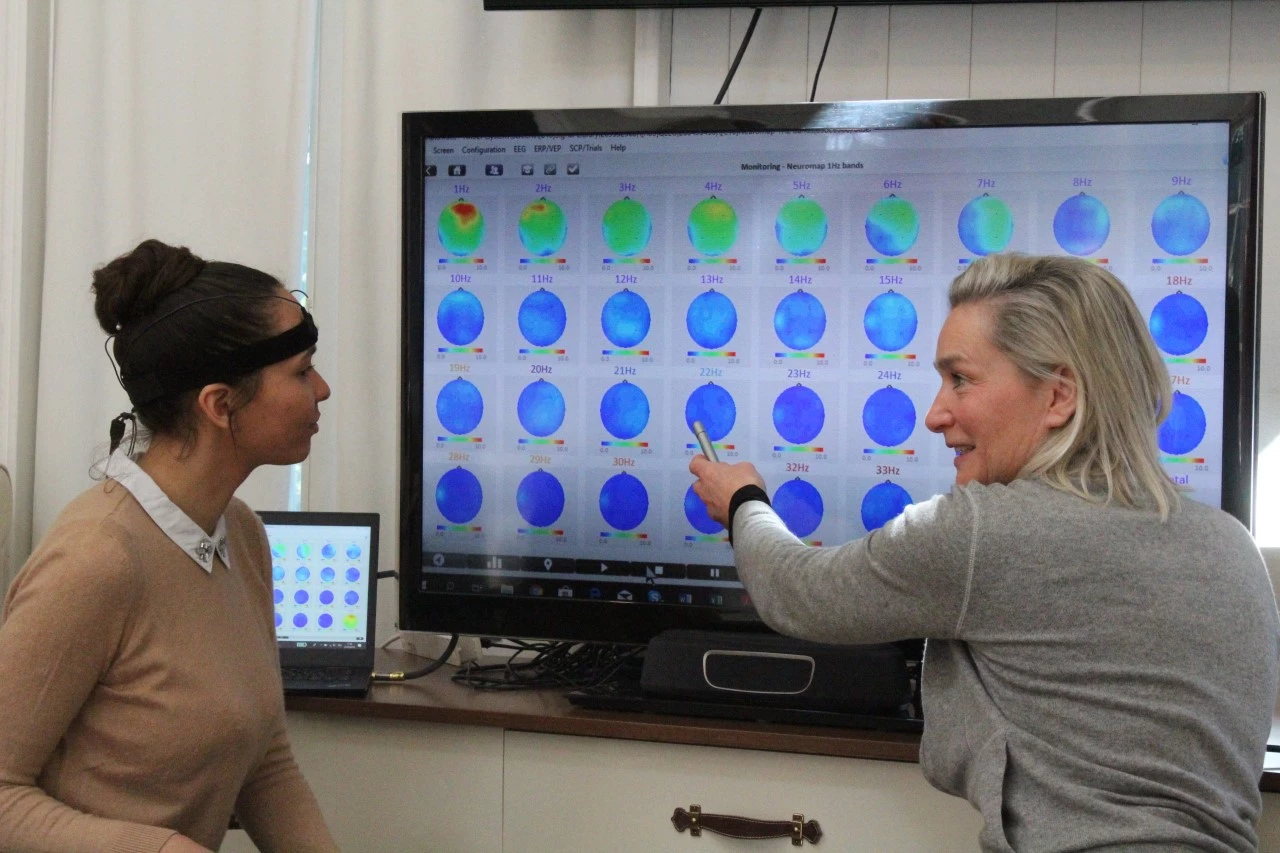- Opening hours by appointment
- +41-78 7 141415
- [email protected]
Quantitative EEG - qEEG
Quantitative Elektroenzephalogram (qEEG)


The at the Mind&Body Performance Center of the Institute for Neurofeedback and Biofeedback (I-NFBF) has an excessive experience and database from thousands of its treeted patients. In combination with the data base of Neuroguide it has developed its own qEEG treatment.
What is a qEEG? In scientific research and clinical practice, a method of measurement is called the quantitative electroencephalogram (qEEG). It is used to objectively record the functioning and over- and underactivation of neural networks in the brain. During a qEEG measurement, the patient's brain waves are recorded and analysed sequencially, first with closed eyes followed by open eyes. The measurement device for this qEEG consists of a comfortable qEEG cap which is placed on the patient's head and hooked to the neurofeedback device. The recording usually takes no longer than 15 minutes and is even tolerated by infants.
With qEEG the therapist can provide the patient objective statements about the occurrence of certain activation patterns of his/her brain performance, which may be associated with the specific symptoms or regulatory disorders. Furthermore, the patient can be examined on so-called paroxysmal activities, i.e. instabilities, which indicate an increased risk of epilepsy or a tendency to convulsions.
If necessary, the patient undertakes a psychometric test battery to test various cognitive and executive functions of his/her brain, such as retention ability, working memory, cognitive flexibility, information processing, attention span, permanent attention, impulse control and inhibition, action planning and control. The proprietary state of the art analysis software and devices deployed by the I-NFBF for processing the qEEG measure and analyse in parallel instantly the dynamic changes in the brain (i.e. which areas work efficiently and which are less efficient or overexcited). The qEEG system even observes the brain activities of the patient while he/she performs cognitive processing tasks. qEEG measurements are compared with data from a normative database (standard deviation from an age-adjusted reference group). As well, the I-NFBF uses graphic tools to illustrate the brain activities in so-called brain maps.
The qEEG is an excellent tool and extensively used to measure complex clinical situations in order to determine a founded treatment protocol for neurofeedback therapy. This protocol is tailored to the special needs / strengths and weaknesses of a patient, to plan the therapy, and to monitor the progress of the therapy. The results of the qEEG analysis are discussed in detail with the patient.

Then, the therapy goals are formulated together with the patient and an individual treatment plan is developed together with the I-NFBF therapist. The results of the patient's medical history, his/her stress profile, his/her quantitative electroencephalogram (qEEG) and his/her self-assessment procedures with questionnaires, build the basis of the therapy road map.
Are you intrigued to have a qEEG to find out about your cognitive and executive functions of your brain? Then call us at 0041 78 7141415 or send us an email [email protected] to schedule an appointment.

